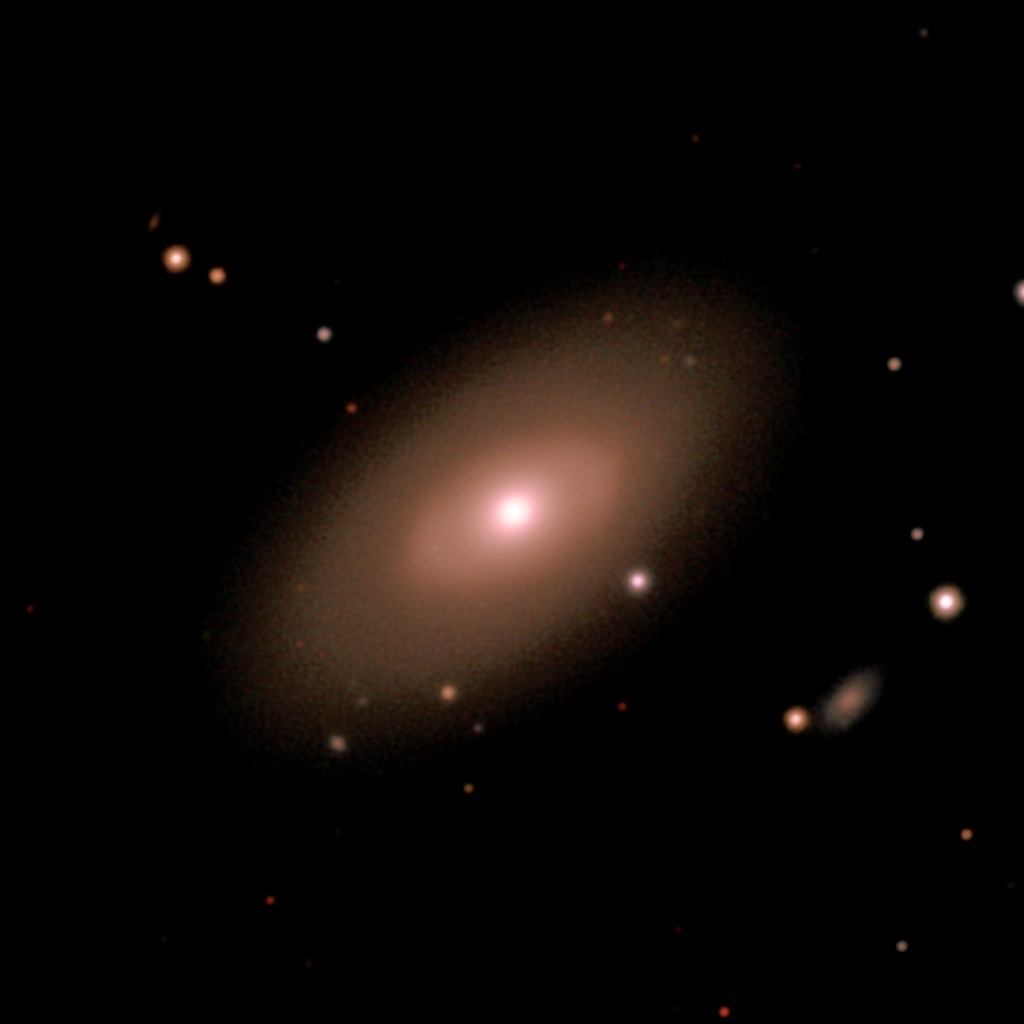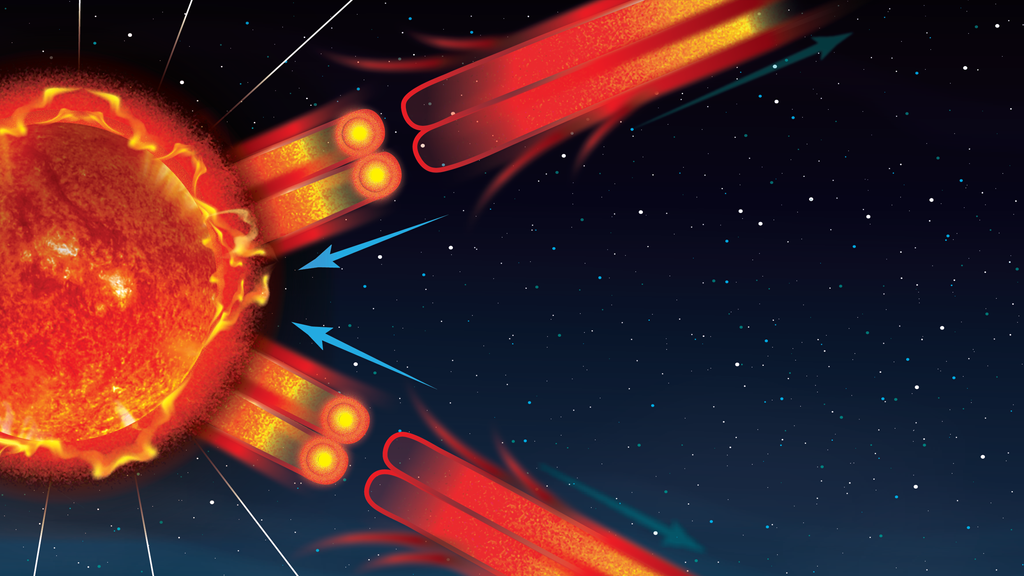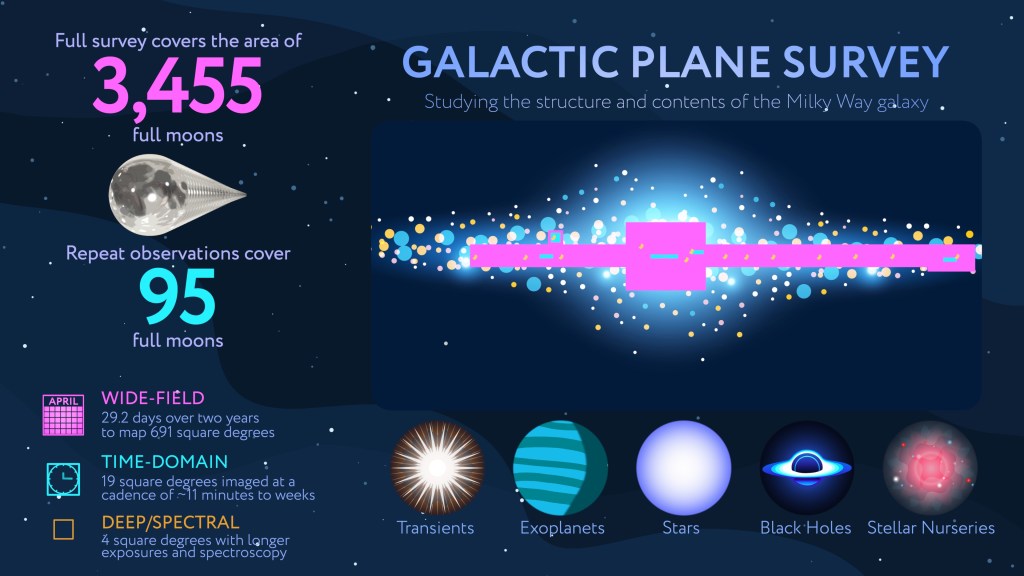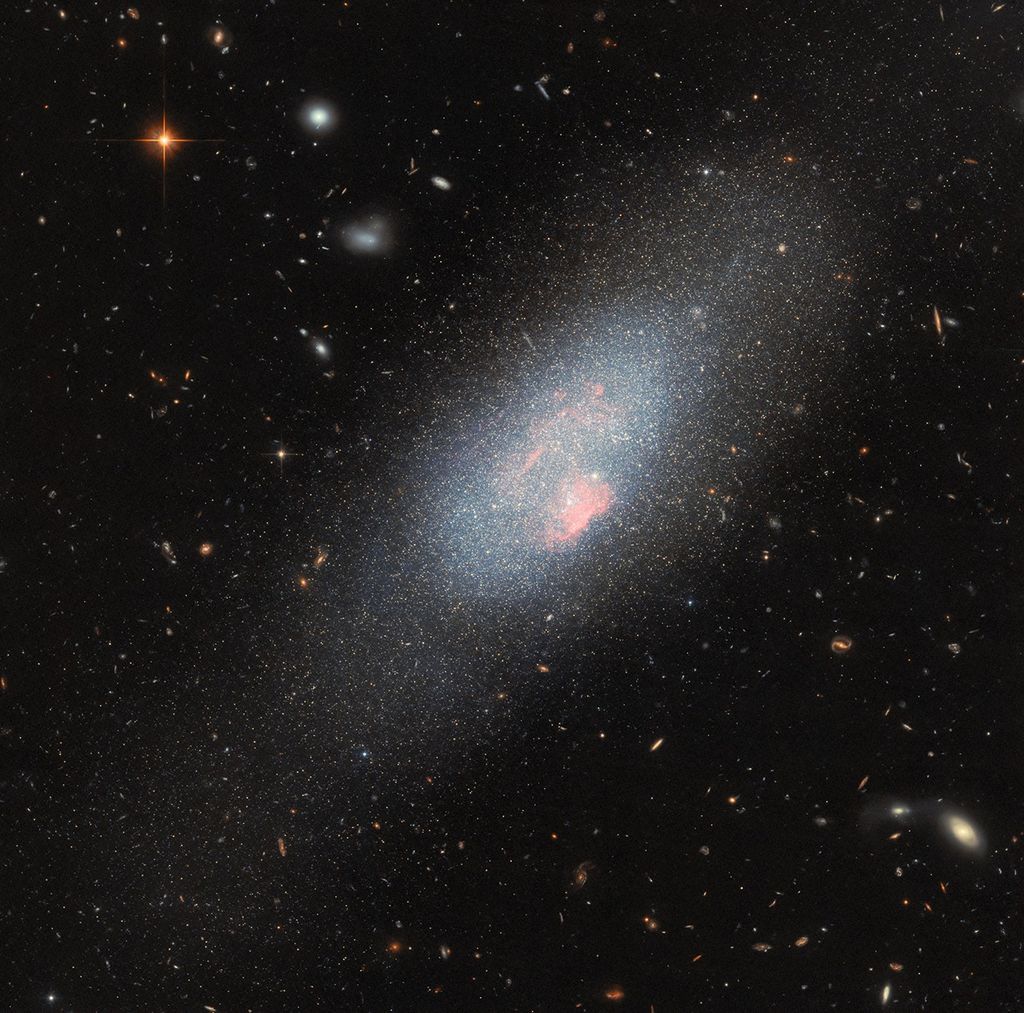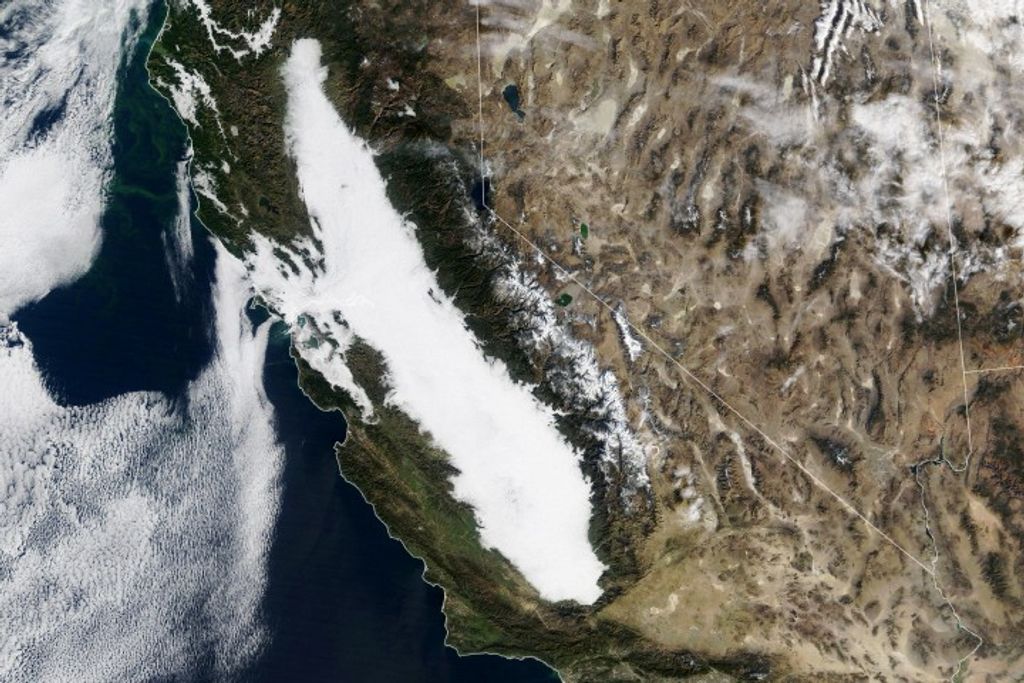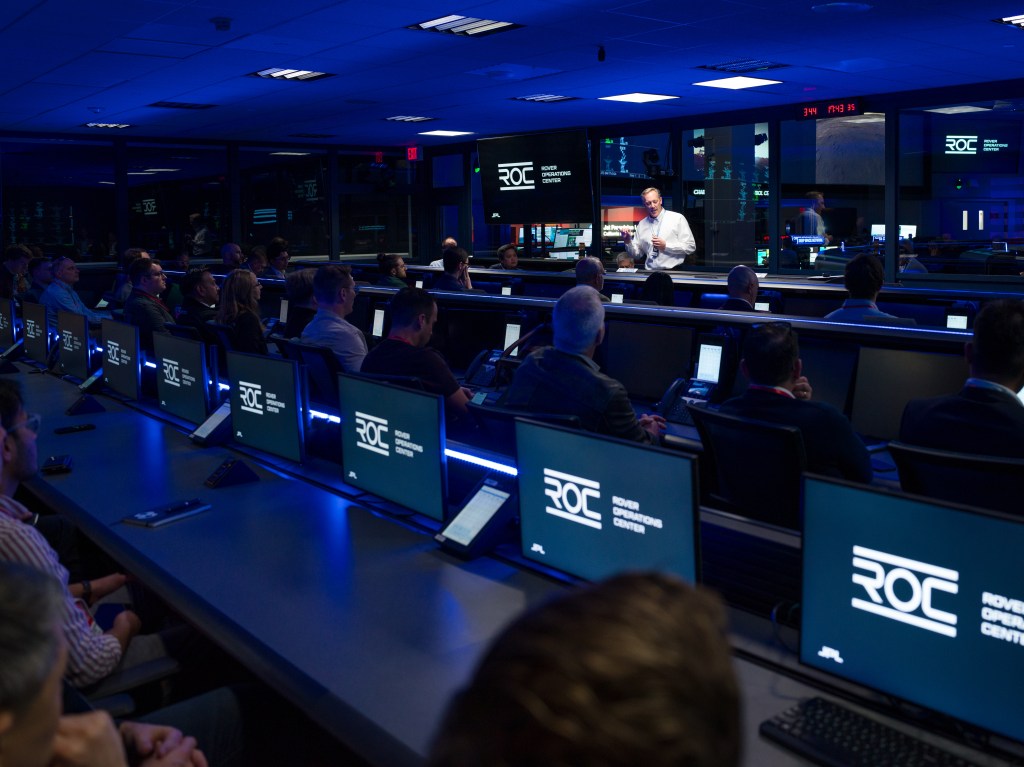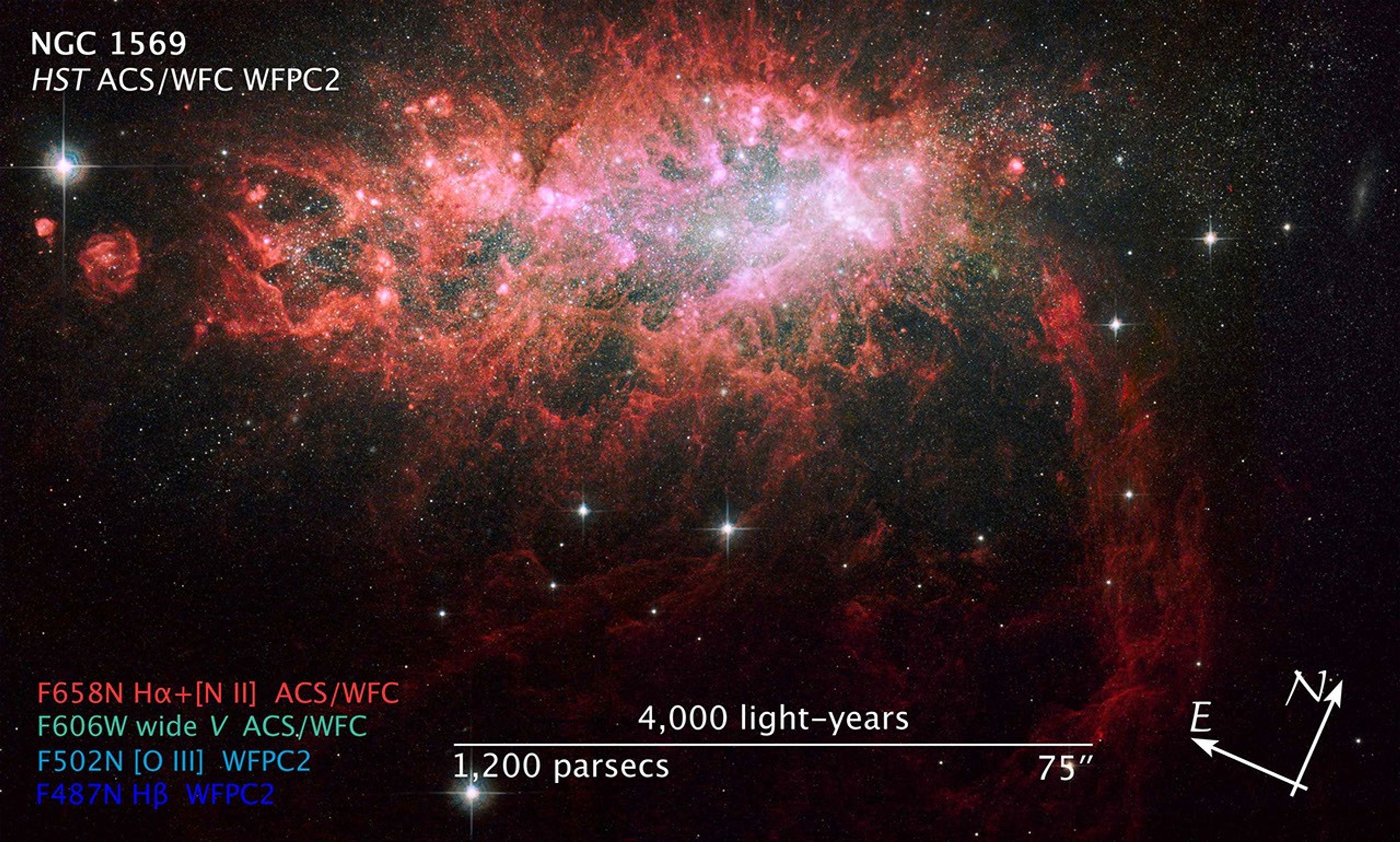1 min read
Large-Field Hubble Image of Starburst Galaxy NGC 1569

About the Object
- R.A. PositionR.A. PositionRight ascension – analogous to longitude – is one component of an object's position.04h 30m 49.0s
- Dec. PositionDec. PositionDeclination – analogous to latitude – is one component of an object's position.64° 50' 52.0"
- ConstellationConstellationOne of 88 recognized regions of the celestial sphere in which the object appears.Camelopardalis
- DistanceDistanceThe physical distance from Earth to the astronomical object. Distances within our solar system are usually measured in Astronomical Units (AU). Distances between stars are usually measured in light-years. Interstellar distances can also be measured in parsecs.11 million light-years (3.4 megaparsecs)
About the Data
- Data DescriptionData DescriptionProposal: A description of the observations, their scientific justification, and the links to the data available in the science archive.
Science Team: The astronomers who planned the observations and analyzed the data. "PI" refers to the Principal Investigator.HST Proposal: 8133 P. Shopbell (Caltech), R. Dufour (Rice University), D. Walter (South Carolina State University), and A. Wilson (University of Maryland) HST Proposal: 10885 A. Aloisi (STScI/ESA) et al. The science team includes: A. Aloisi (STScI/ESA), L. Angeretti (Astronomical Observatory of Bologna/INAF), F. Annibali and L. Greggio (Astronomical Observatory of Padua/INAF), A. Grocholski (STScI), E. Held (Astronomical Observatory of Padua/INAF), J. Mack (STScI), D. Romano (Astronomical Observatory of Bologna/INAF), M. Sirianni (STScI/ESA), M. Tosi (Astronomical Observatory of Bologna/INAF), and R. van der Marel (STScI). - InstrumentInstrumentThe science instrument used to produce the data.HST>ACS/WFC and HST>WFPC2
- Exposure DatesExposure DatesThe date(s) that the telescope made its observations and the total exposure time.September 1999, November 2006, and January 2007
- FiltersFiltersThe camera filters that were used in the science observations.ACS: F658N (H-alpha + [N II]) and F606W (wide V) WFPC2: F502N ([O III]), F487 (H-beta)
- Object NameObject NameA name or catalog number that astronomers use to identify an astronomical object.NGC 1569
- Object DescriptionObject DescriptionThe type of astronomical object.Dwarf Irregular Galaxy
- Release DateNovember 20, 2008
- Science ReleaseHubble Resolves Puzzle about Loner Starburst Galaxy
- Credit

The image is a composite of separate exposures made by the ACS and WFPC2 instruments on the Hubble Space Telescope. Three filters were used to sample narrow-wavelength ranges. One filter was used to sample broad wavelengths. The color results from assigning different hues (colors) to each monochromatic image. In this case, the assigned colors are: Red: F658N (H-alpha + [N II]) Green/cyan: F606W (wide V) Cyan: F502N ([O III]) Blue: F487 (H-beta)
Related Images & Videos

Starburst Galaxy NGC 1569
This image taken by NASA's Hubble Space Telescope showcases the brilliant core of one of the most active galaxies in our local neighborhood. The entire core is 5,000 light-years wide. The galaxy, called NGC 1569, sparkles with the light from millions of newly formed young stars....
Share
Details
Claire Andreoli
NASA’s Goddard Space Flight Center
Greenbelt, Maryland
claire.andreoli@nasa.gov


